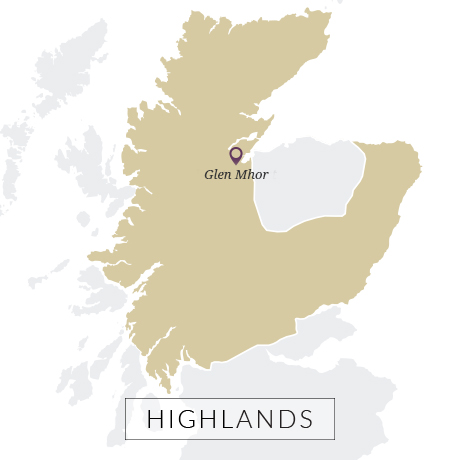Auchroisk
One of Diageo’s ‘nutty-spicy’ sites.


Glen Mhor was one of a number of single malts which were being bottled in the late 19th and early 20th century, a further demonstration that the commonly held notion that this was a 1960s concept is not borne out by historical evidence.
A small two-still operation, it is now very rarely seen although SMWS and Gordon & MacPhail have, on occasion, bottled it. Bottlings show it to be a big, fat and quite muscular malt with a meaty and lightly smoky undertow.
It re-emerged most recently when it was named as one of the malts in the Mackinlay’s blend which was found entombed in ice under Ernest Shackleton’s hut. The distillery’s other claim to fame was as the place where Scottish novelist, and author of the polemic Scotland and Whisky, Neil M. Gunn, was first based.

Clearly in 1892 when John Birnie, the manager of Glen Albyn (which sat opposite) entered into a business partnership with Leith blender Charles Mackinlay, he was thinking commercially. The new distillery was designed by the leading architect of the era, Charles Doig, and located between the Caledonian Canal and the railway giving it superb communication links. In 1920, Mackinlay & Birnie bought Glen Albyn.
Unusually, the distillery remained water-powered until the 1950s and had Saladin maltings installed in 1954.
In 1972, it became a late addition to the DCL portfolio, although it would only remain with the industry giant until 1983 when it was another of Scotland’s smaller stills to close. Three years later it was demolished.
Seen from a modern perspective in which the importance of whisky tourism is a major consideration, the fact that the capital of the Highlands doesn’t have a single distillery might seem strange. It’s easy to forget how vey different the business was only a few decades ago.